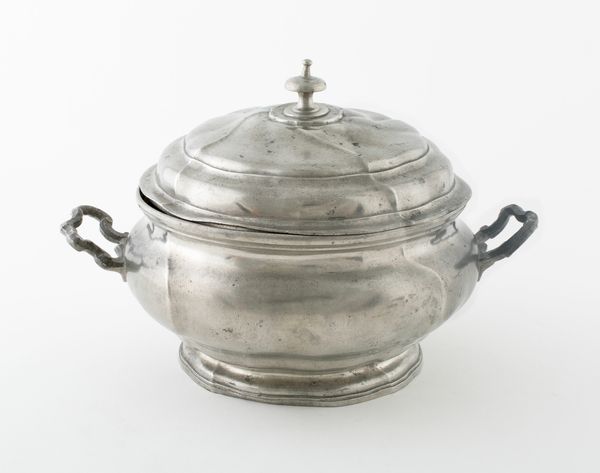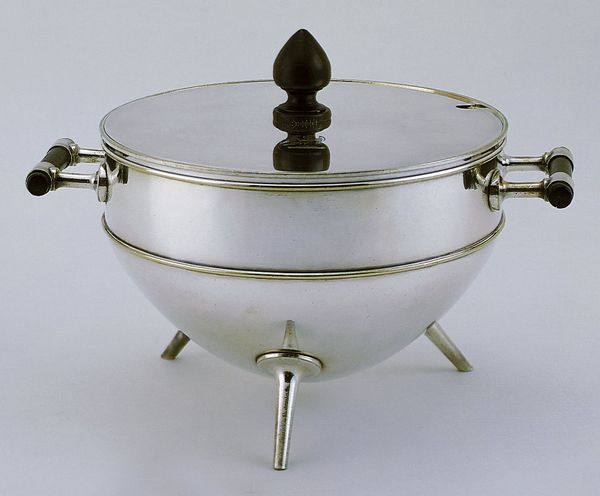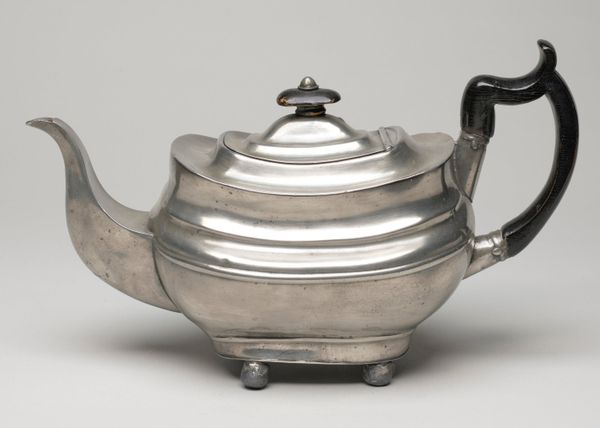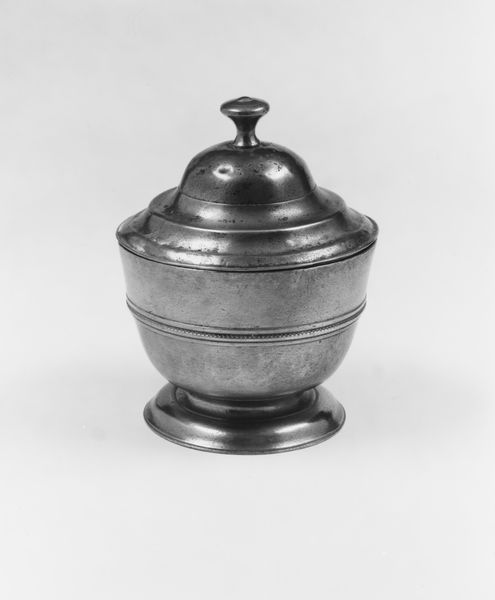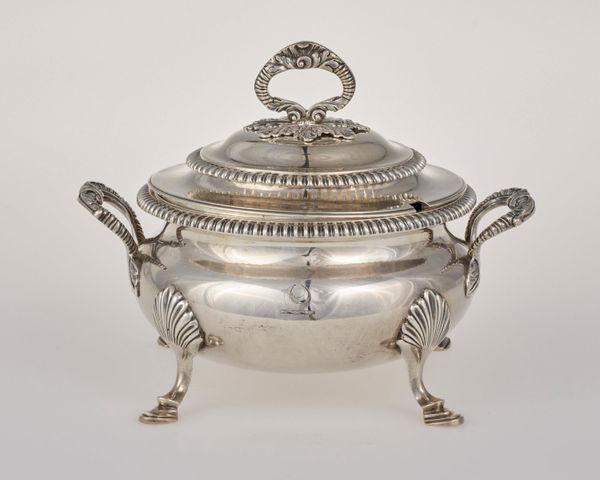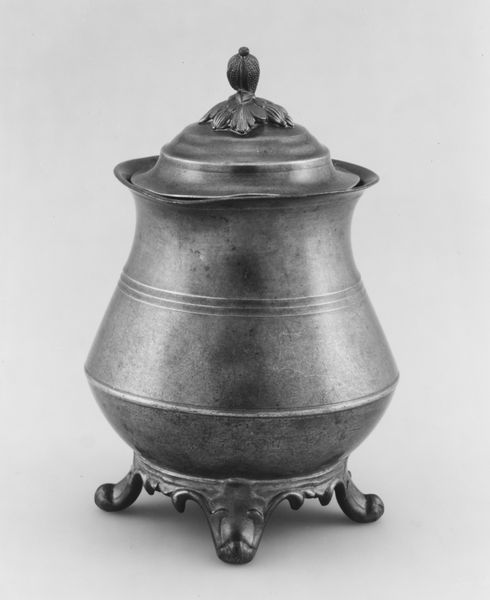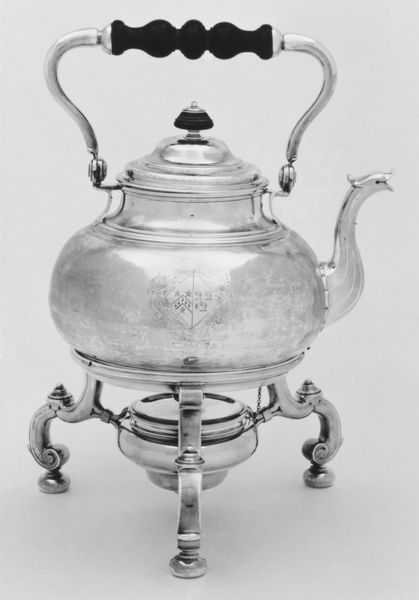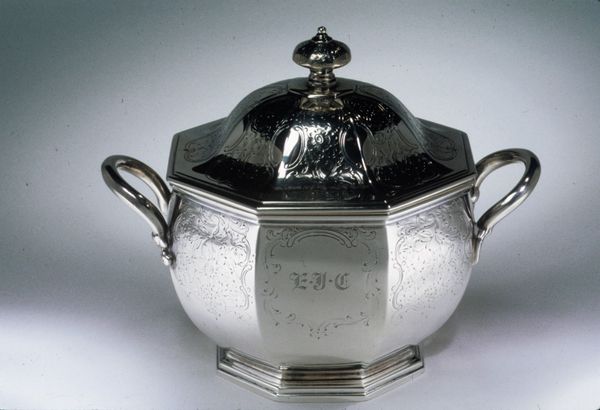
metal, sculpture
#
metal
#
sculpture
Dimensions: H. 5 in. (12.7 cm)
Copyright: Public Domain
Curator: Standing before us is a sugar bowl crafted between 1830 and 1845. It's a piece fashioned from metal and its creator is identified as George Richardson. Editor: It strikes me as somewhat severe, despite its purpose. The cool, muted tones of the metal lend a sense of formality, almost as if it were more ceremonial than functional. Curator: Indeed. Sugar, especially in the early 19th century, carried immense social weight. It was a signifier of status and wealth. This sugar bowl, sitting centrally on a table, visually reinforced that hierarchy. Editor: And the choice of metal? It’s so unlike the delicate porcelain we often associate with sugar services. Is this meant to imply something about resilience, or perhaps the burgeoning industrial spirit of the time? Curator: Metalware, including pieces like this, gained popularity due to its durability and relative affordability compared to silver. While silver connoted established wealth, metal suggested a burgeoning middle class and industriousness, a new kind of social mobility being expressed through household objects. The symmetry adds an enduring symbolic value. Editor: It makes one consider the labor practices, doesn't it? The shiny object is connected to global economic and labor networks. Can we separate the beauty from its dark history? Curator: Exactly. Even in something seemingly benign, we see embedded narratives of trade, labor, and social power. Editor: Looking at it, I can't help but ponder how something so mundane, and arguably quite austere in design, can hold such charged associations. The sugar bowl is both an object of daily use and a stark symbol of inequality. Curator: I'm glad we unpacked those multiple layers. Editor: A sweet ending, indeed.
Comments
No comments
Be the first to comment and join the conversation on the ultimate creative platform.

